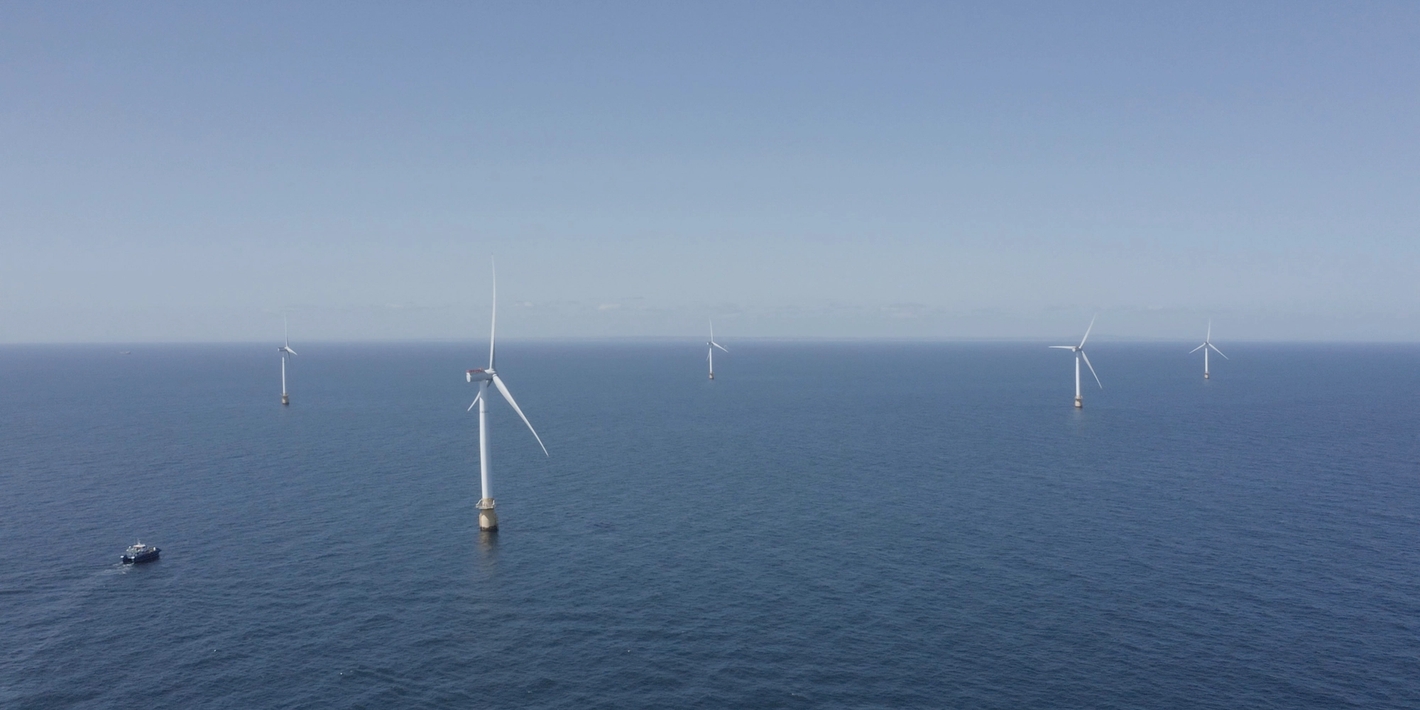Offshore wind
We’re determined to be a global offshore wind energy major
Equinor is well underway to deliver profitable growth in renewables and being a leading company in the energy transition. We will continue to build a profitable business, looking to increase returns on offshore wind through regional synergies, project financing and strategic farm downs, using our early mover capabilities to select new markets to achieve scale at low cost.
We plan to reach an installed net renewables capacity of 12-16 GW by 2030. Two-thirds of this capacity will be within offshore wind.
Equinor currently powers around 750,000 homes through its three offshore wind farms; Sheringham Shoal, Dudgeon, and the world’s first floating wind farm, Hywind Scotland. As well as progressing the biggest offshore wind farm development in the world, Dogger Bank (3.6 GW), Equinor plans to extend two of its UK wind farms, doubling its offshore wind capacity off the coast of Norfolk.
The company is building material offshore wind clusters in the North Sea, the US East Coast and in the Baltic Sea, along with being positioned for future offshore wind options in several geographies, including the UK, Norway and Asia.
How do wind turbines float?
Most offshore wind floater designs are familiar from the oil and gas industry.
Floating wind turbines are moored to the seabed with multiple mooring lines and anchors, in much the same way that a floating oil platform is moored.
Can floating turbines withstand severe weather events like typhoons?
Floating wind turbines are designed according to international standards to withstand extreme weather events within a 50-year period, including typhoons. All turbines are tested and certified before being deployed to ensure they can withstand environmental forces.
Equinor has extensive experience designing foundations for floating wind turbines. Both our floating wind farms, Hywind Scotland – the world’s first floating wind farm – and Hywind Tampen – soon to be the world’s largest floating wind farm – are located in the North Sea, a region known for its harsh weather conditions. This will further deepen our understanding of designing substructures suitable for use in East Asia area.
Developing floating offshore wind
With more than a decade of operating experience from floating offshore wind, Equinor is the world’s leading floating offshore wind developer with floating wind turbines already deployed and in production. Our offshore experience and project management expertise from the North Sea and around the world makes us uniquely qualified to lead the way and further develop floating offshore wind in a safe and efficient way.
Equinor will always select the best suited floating wind technology for their projects.
Offshore wind opportunities in Japan
Equinor sees strong potential for offshore wind in Japan. With the world’s sixth largest sea space, Japan’s long-term potential for offshore wind energy is estimated by the Japan Wind Power Association to be ~ 600 GW.
The coast of Japan offers interesting opportunities for developing offshore wind, especially in deeper waters well suited to floating wind technology.
With Equinor being the leading floating offshore wind developer, we have the competence and technical skill needed and are ready to contribute long term to the country’s ambitious offshore wind plans.
Selecting the most cost-efficient concept design and achieving optimal fabrication efficiency is key to competitive large-scale floating wind parks. We will work closely with the supply chain to develop the next industrial phase of floating wind farms concepts and technology.
Our ambition is to bring floating towards commercial scale by 2030.


